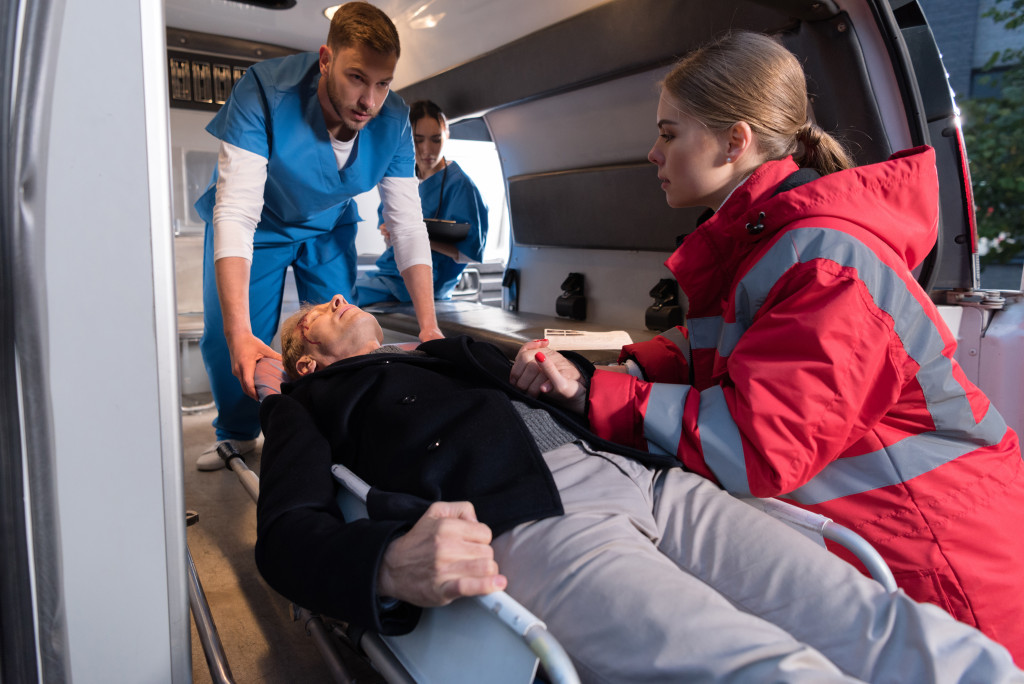The pandemic has caused a lot of concern and chaos throughout the world. Every day, a new case is reported, and it’s hard to know what to do or where to turn for information. As a result, many people are forced to stay at home, which can be problematic for some.
Thankfully, some heroes are willing to help every person in the community. These heroes are what many call first responders.
First responders are always ready to help in an emergency. They are usually the first people to arrive at the scene and provide assistance. They are often volunteers, but some are paid, professionals.
They come from all different backgrounds and professions. Some are firefighters, paramedics, police officers, or nurses. But, no matter what their background is, they all have one common goal: to help others.
As first responders, it can be tough to control the chaos around them, especially where they are deployed. But thankfully, they had technology helping them out every step of the way. The first of which is the humble GPS.

GPS
GPS or also known as Global Positioning System, is a technology that uses satellites to track the location of an object or person. First responders have used it for many years to give them accurate information about their surroundings.
With GPS, first responders can see precisely where they are and what is around them. This is critical in emergencies as it allows them to make quick and informed decisions. Even new people to the job can use it.
There are many benefits of having GPS for first responders. First, as we have stated earlier, even new first responders can use it. Another advantage is that it can reduce the needed time for a response. This can make a huge difference when people’s lives are at stake or when reducing infection rates within a specific area.
The last benefit of having a GPS is that it can help coordinate specific approaches. This is very important for people whose boots are on the ground and require a new perspective on their location.
Another technology that has helped first responders work is the walkie-talkie.
Walkie-Talkie
The walkie-talkie was invented in 1937 by Donald L. Hings, a Canadian inventor. It was originally designed as a two-way wireless telephone for ship-to-shore communication. However, the first mass production of walkie-talkies began during World War II for the military, and they have been used ever since.
Walkie-talkies are small, handheld radios that allow users to communicate with each other wirelessly. They come in a variety of shapes and sizes, but all operate on the same basic principle: the user speaks into a microphone, and the sound is converted into an electrical signal that is transmitted over the radio waves to the other walkie-talkie. The recipient’s walkie-talkie then converts the signal back into sound, allowing them to hear the other person’s voice.
Walkie-talkies are a great way for first responders to communicate with each other. They are easy to use and don’t require any training. Furthermore, when used in conjunction with GPS, it can help increase the interoperability of law enforcement within a certain area. This is helpful when there are riots around, a scene that became quite common during the pandemic.
Mobile Computers
In today’s world, many first responders are using mobile computers in the field. These computers are often ruggedized and designed to withstand the harsh environment of a disaster area. They come with a variety of features, such as GPS, walkie-talkie, and cellular capabilities.
This allows first responders to have all the information they need at their fingertips. They can access maps, emergency plans, and even video footage of the scene. This can be critical in making informed decisions during an emergency situation.
Mobile computers have become an essential part of first responder operations. They allow first responders to work more efficiently and effectively. With the right software and applications, they can do everything from tracking patients to coordinating relief efforts.
Smartphones
Smartphones have also become an essential tool for first responders. They provide a wealth of information in a small and portable package. Smartphones can run a wide variety of applications, including mapping applications, weather apps, and even crisis response apps.
They also come with a built-in camera, which can be used to take pictures or videos of the scene. This can be helpful for documenting evidence or for sharing information with other first responders.
Smartphones are a great way for first responders to stay connected with each other and the outside world. They allow first responders to access information quickly and easily. With the right apps, they can be a powerful tool in any emergency situation.
The use of walkie-talkies, GPS, mobile computers, and smartphones has become so prevalent in the first responder community that it is hard to imagine what life was like without them. While these technologies have been around for many years, their use has never been more important than it is now. With the world facing a pandemic, these technologies are our best hope for containing it and preventing further spread.

